Central Asia's Silk Road is literally the stuff of legends. The words alone conjure images of camel caravans, desert fortresses, and bustling bazaars where silk, spices, and stories were once exchanged. But this ancient route is more than just a historical footnote — it’s a living, breathing journey through culture, community, and wonder. Today, the 'stans of Central Asia — Kazakhstan, Kyrgyzstan, Uzbekistan, Tajikistan, and Turkmenistan — are among the most exciting, undiscovered travel frontiers on Earth.
If you're looking for inspiration to book the trip of a lifetime, here are under-the-radar places in the 'stans that will make you feel like you've stepped into a living storybook, whether you're hiking the Fann Mountains in Tajikistan, sleeping in a yurt under the stars, or exploring blue-tiled mosques in Uzbekistan.
Go off-grid at Song-Köl
One of the best things to do in Kyrgyzstan, Song-Köl is a lake high up in the mountains where time stands still. At more than 3,000m (9,843 ft) above sea level, this vast alpine lake is surrounded by rolling jailoos (summer pastures) where semi-nomadic herders graze their livestock. You won't find resorts or souvenir shops here — just yurts, wildflowers, and stars that light up the night sky. Staying with a local Kyrgyz family in a traditional yurt gives you a glimpse into a way of life that has barely changed since Silk Road times. Think horseback rides, fermented mare's milk, and uninterrupted nature.
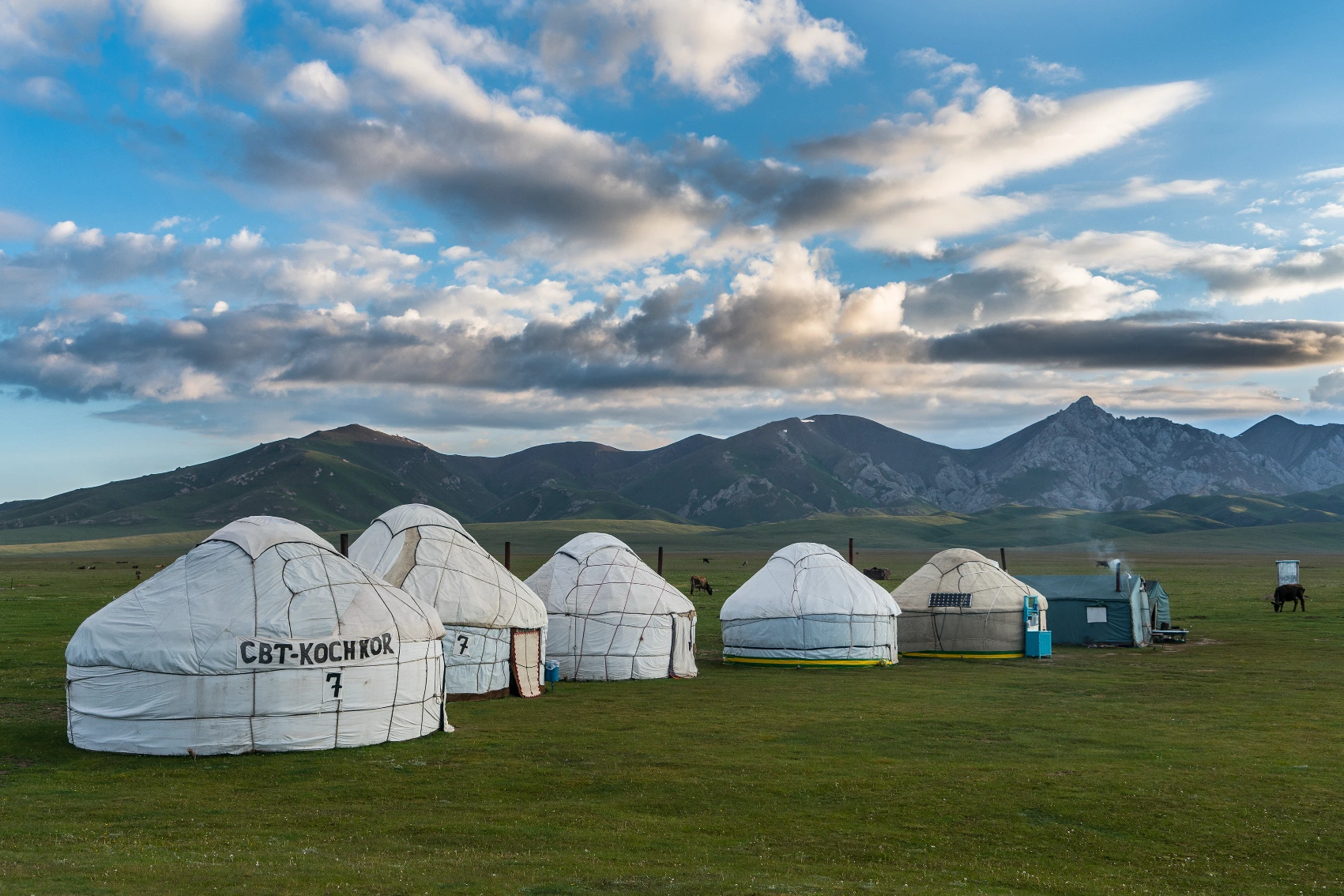
Experience it for yourself on: Multi-Stan Adventure - Bishkek to Tashkent
Soak up the scenery of Jety-Oguz Gorge
You might not expect to find Mars-like landscapes in the heart of Central Asia, but Jety-Oguz Gorge in Kyrgyzstan delivers. Located near the resort town of Karakol, the name Jety-Oguz means seven bulls, referencing the towering red sandstone cliffs shaped like their namesake animal. This dramatic valley was a favourite of Soviet cosmonauts, who trained here before their space missions. Today, it's an ideal spot for hiking, horseback riding, and soaking in thermal springs surrounded by otherworldly scenery.
Experience it for yourself on: Highlights of Kyrgyzstan and Kazakhstan
Climb back in time at Burana Tower
Just outside Bishkek, the capital of Kyrgyzstan, lies Burana Tower, a lonely sentinel of the ancient Silk Road city of Balasagun. At only 25m (82 ft) tall — it once stood at 45m (148 ft) — this 11th-century minaret is one of Kyrgyzstan's most important historical sites and a tangible link to Silk Road history. Climb the narrow, winding staircase to the top for panoramic views of the Chuy Valley. Wander among the surrounding petroglyphs and stone balbals (grave markers) to imagine what this Silk Road outpost looked like during its heyday.
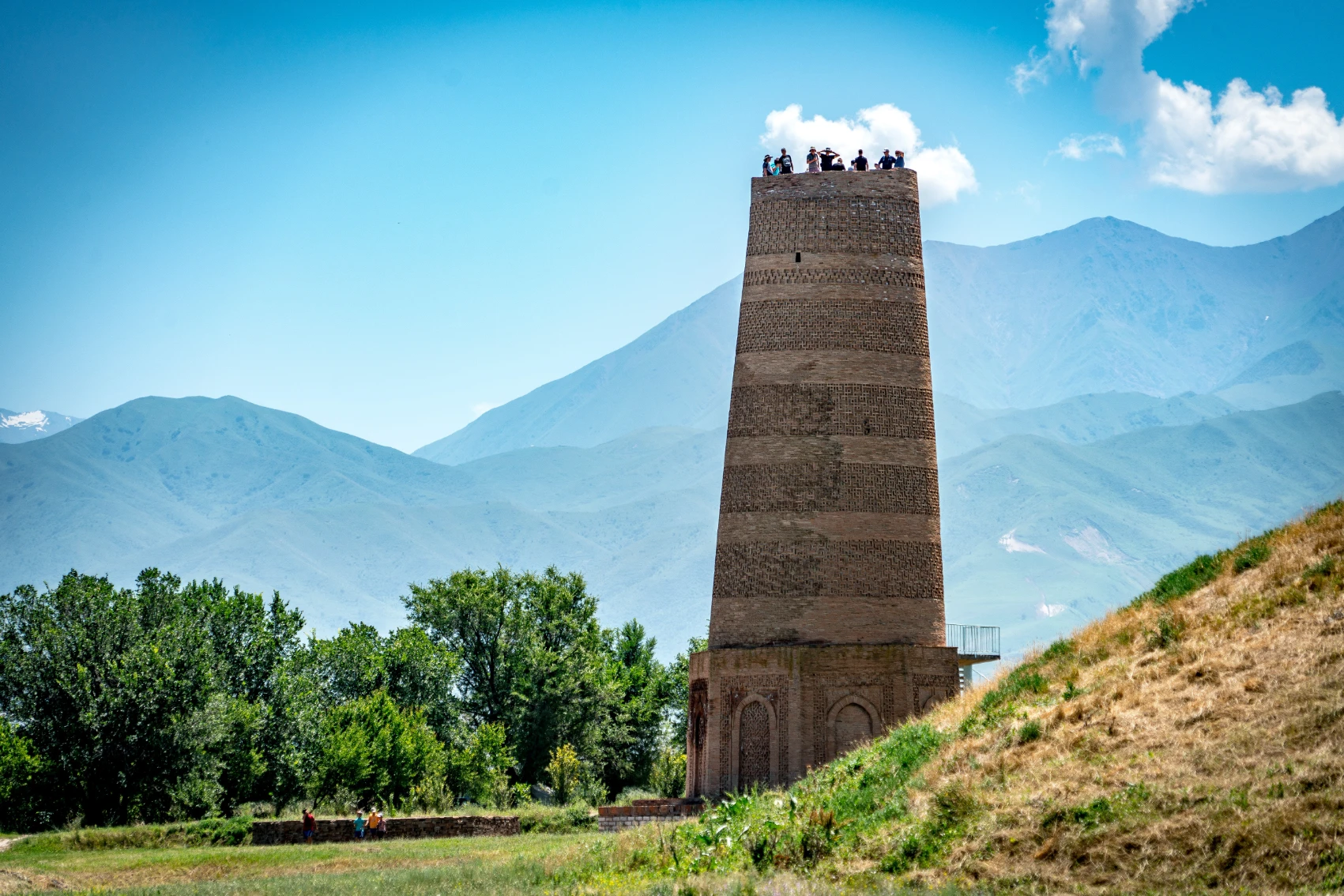
Experience it for yourself on: The Five Stans of the Silk Road
Explore Kolsay Lakes National Park
Kolsay Lakes National Park in Kazakhstan is proof that the Silk Road's treasures extend far beyond deserts and caravans. Tucked in the northern Tian Shan mountains, this trio of alpine lakes — Lower, Middle, and Upper Kolsay — is ringed by spruce forests and towering peaks. Hike between the first and second lakes, an accessible 8km (5 mi) trek, or rent a boat to glide across the mirrored surface. Keep an eye out for deer, lynx, and golden eagles along the way. Kolsay is the ultimate place to reset and reconnect with nature.
Experience it for yourself on: Highlights of Kyrgyzstan and Kazakhstan
Wander Green Hill Almaty
In Kazakhstan's former capital, modern meets mountain at Green Hill Almaty. While not a natural feature, this hillside park is beloved by locals for its walking paths, cafés, and panoramic city views. Take the Kok-Tobe cable car to the top for a postcard-perfect panorama of Almaty framed by snow-capped peaks. On a clear day, you'll see why this city is the gateway to the Zailiysky Alatau Mountains.
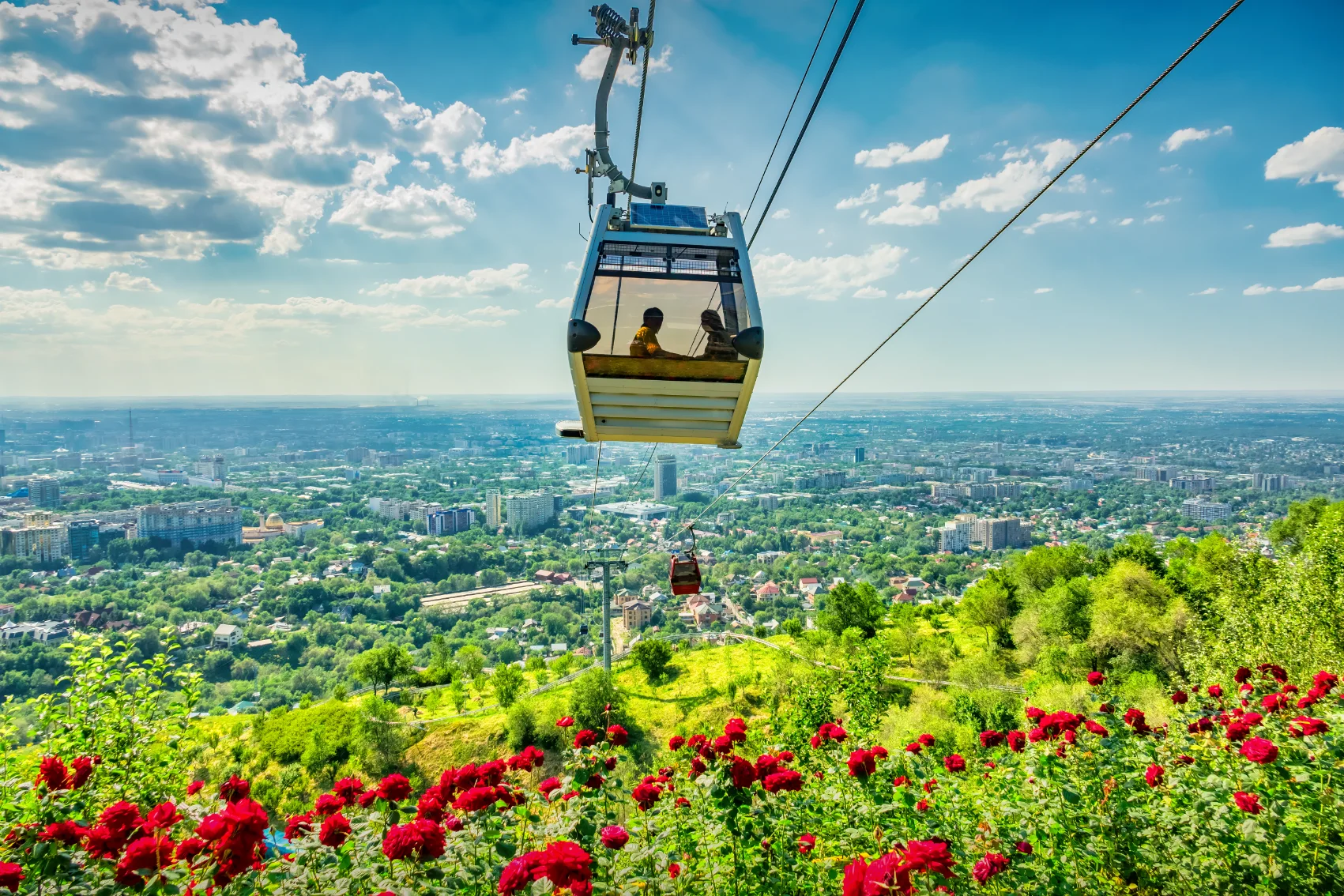
Experience it for yourself on: Kyrgyzstan & Kazakhstan: Colourful Canyons & Nomadic Living
Discover ancient secrets at Mug Teppe
Once a thriving Silk Road fortress, Mug Teppe is now an archaeological site perched above the city of Panjakent in Tajikistan. This ancient citadel dates from the 5th century and offers stunning views of the Zeravshan Valley. Excavations have uncovered Zoroastrian temples, fortifications, and residential structures.
Trek in the dramatic Fann Mountains
The Fann Mountains are Tajikistan's best-kept secret — and possibly Central Asia's most awe-inspiring range. Known for their sky-piercing peaks, turquoise lakes, and traditional villages, the Fanns are a dream for intrepid hikers and photographers. Iskanderkul, a lake named after Alexander the Great, is a turquoise jewel set against snow-dusted cliffs. Multi-day treks through the Haft Kul (Seven Lakes) offer both soul-stirring landscapes and cultural encounters with Tajik shepherd families.
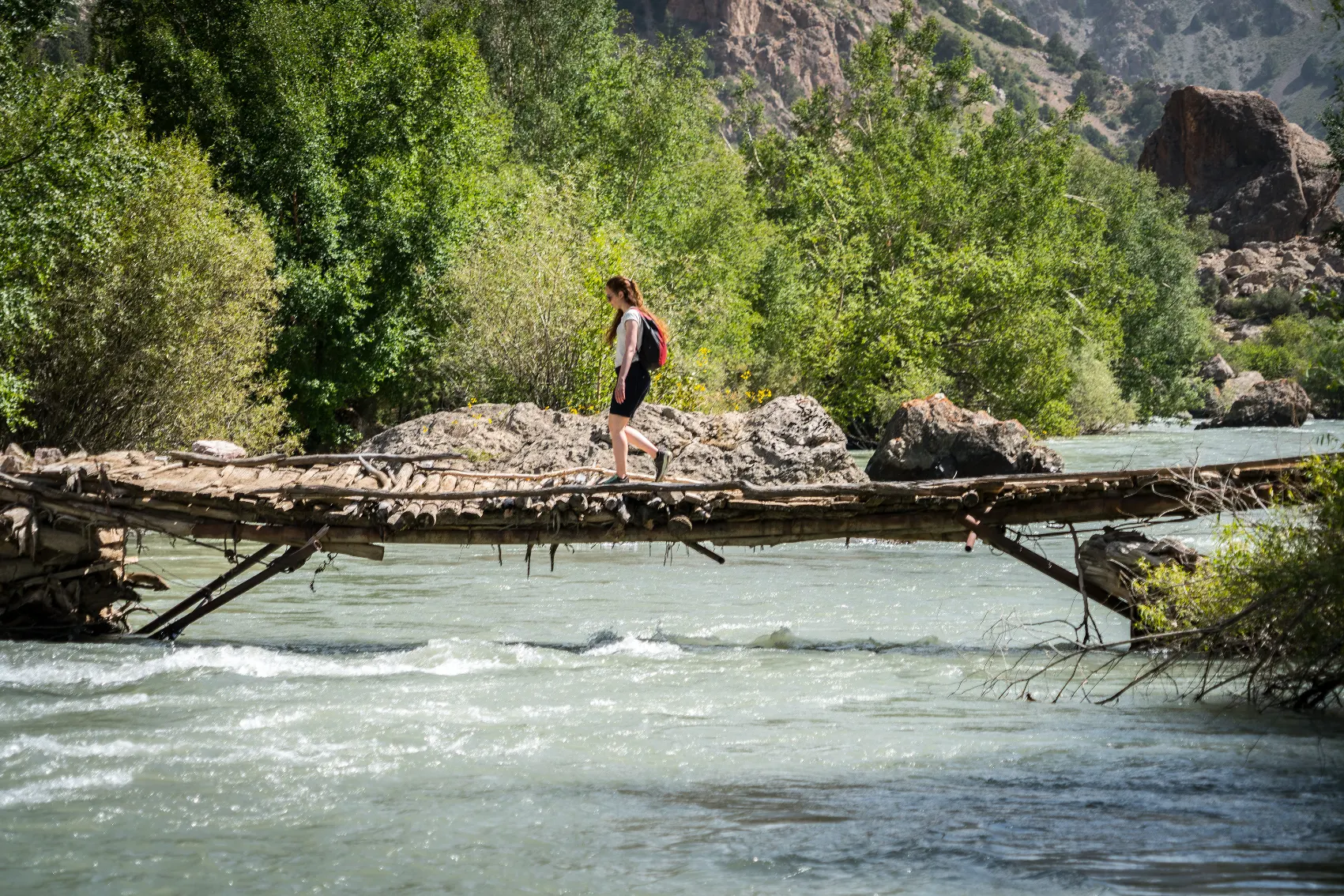
Experience it for yourself on: Best of Kyrgyzstan and Tajikistan
Sleep under the stars at a yurt camp
If you're craving that once-in-a-lifetime nomadic experience, a night in an Uzbekistan yurt camp could be exactly what you're looking for. Set amid the rolling dunes of the Kyzylkum Desert, these circular felt tents offer cozy interiors, starlit skies, and an off-the-grid digital detox. You'll dine on traditional Uzbek fare, listen to local musicians play around the campfire, and rise early to catch a sunrise that paints the sand gold.
Experience it for yourself on: Highlights of Uzbekistan
Pay tribute at the Amir Timur Mausoleum
In the heart of Samarkand, Uzbekistan, stands a dazzling blue dome that's the final resting place of one of Central Asia's greatest rulers: Amir Timur (Tamerlane). The Amir Timur Mausoleum, known as Gur-i-Amir, is a crown jewel of Silk Road history and one of Uzbekistan's most photographed landmarks. Stepping inside, you're surrounded by rich blue tiles, Arabic calligraphy, and a palpable sense of reverence. It's easy to feel small under the ornate ceiling, and for good reason — Timur's empire once stretched from Delhi to Damascus.
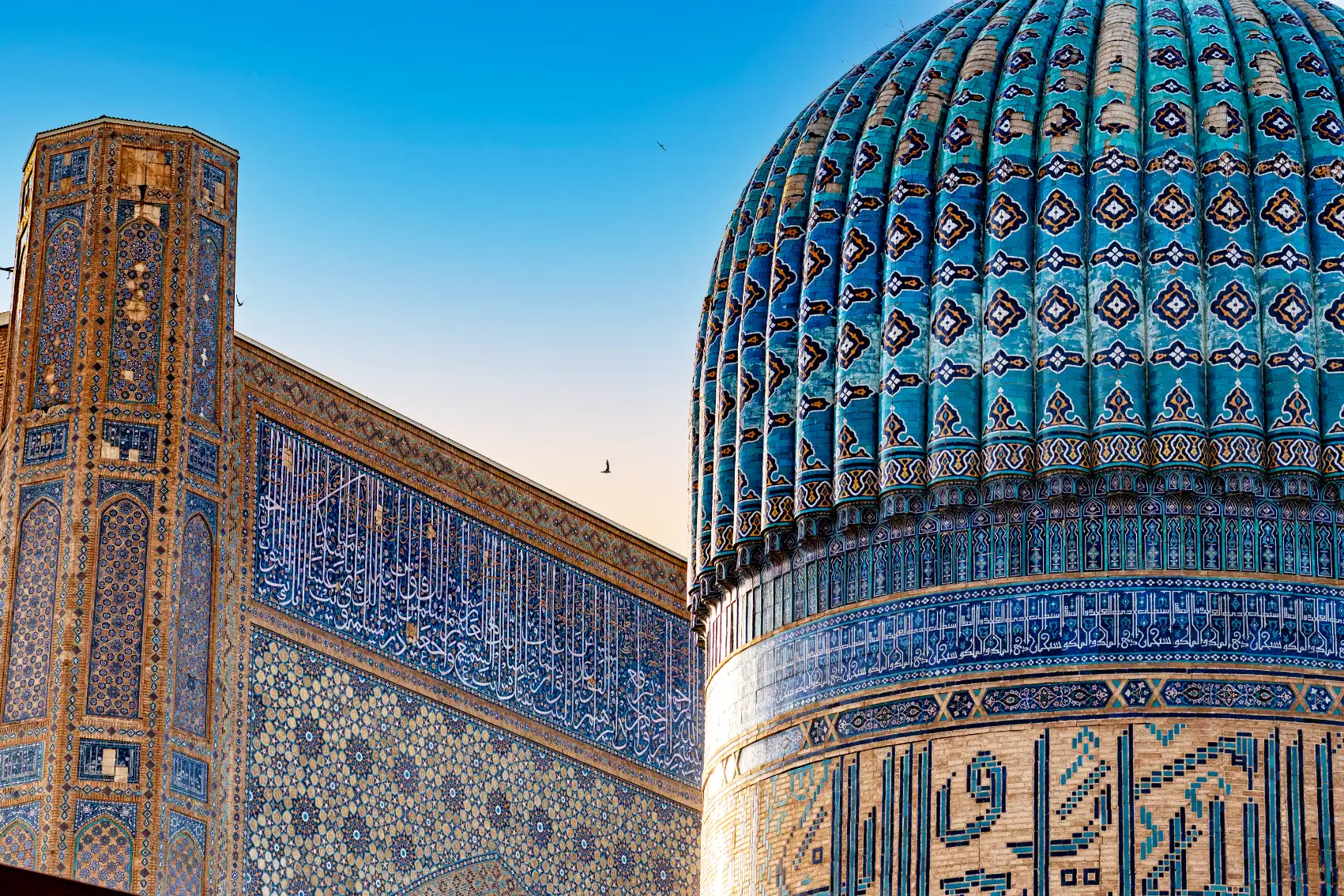
Experience it for yourself on: Best of Uzbekistan and Turkmenistan
Get lost in time in Bukhara
Of all the Silk Road cities in Uzbekistan, Bukhara may be the most atmospheric. A UNESCO World Heritage Site, this historic centre of learning and trade has more than 140 architectural monuments. But don't let that number intimidate you — Bukhara is meant to be savoured slowly. From the soaring Kalon Minaret to the intricate tilework of the Mir-i-Arab Madrasa, the city is a feast for the eyes. Duck into the trading domes, where silks and spices are still sold as they were centuries ago. Don't miss a stop at a tea house for a pot of saffron-infused brew.
Experience it for yourself on: Solo-ish Uzbekistan
Wander the open-air museum of Khiva
With its sand-coloured city walls and fairy-tale minarets, Khiva, Uzbekistan, is like a scene from One Thousand and One Nights. The Itchan Kala — the walled old town — is Central Asia's first UNESCO World Heritage Site and remains a meticulously preserved Silk Road treasure. You can climb the winding stairs of the Islam Khodja Minaret for spectacular views or wander through the alleyways to find artisans selling hand-painted ceramics and woven carpets. When the call to prayer echoes through the air at sunset, the city pauses in silence.
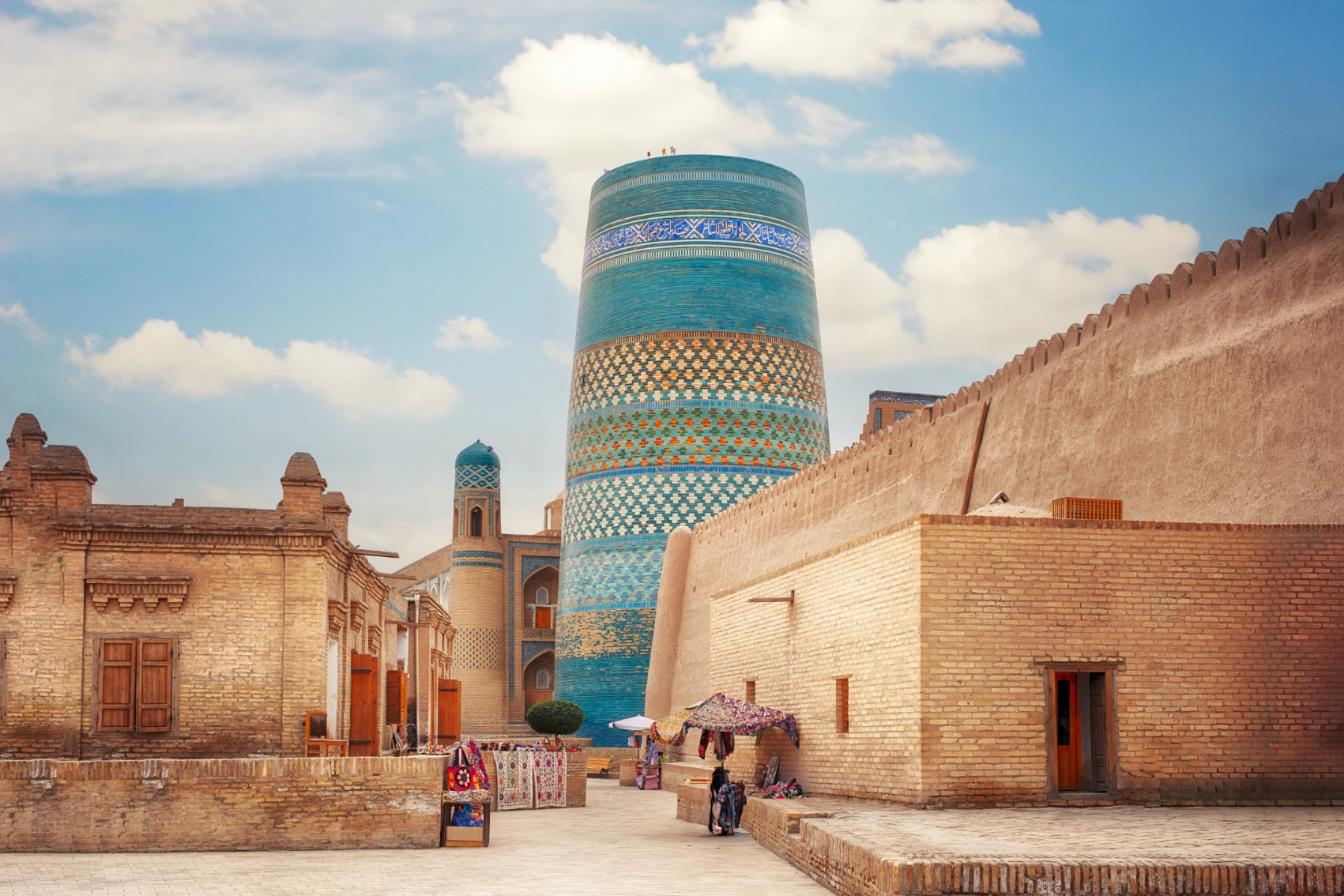
Experience it for yourself on: Uzbekistan and Tajikistan: Silk Roads & The Seven Lakes
Step into the past at Kunya Urgench
Now a haunting archaeological site in northwestern Turkmenistan, Kunya Urgench was once a thriving Silk Road city and capital of the Khorezm Empire. Although much of it was razed by Genghis Khan in the 13th century, what remains will stop you in your tracks. Highlights include the Kutlug Timur Minaret — one of the tallest brick minarets in the Islamic world — and the mausoleums of Sufi scholars and Khorezm rulers.
Experience it for yourself on: Best of Uzbekistan and Turkmenistan
Be wowed by the Darvaza Gas Crater
Perhaps the wildest stop on the Silk Road is a fiery pit in the middle of the desert known as the Darvaza Gas Crater or "The Door to Hell." This 70m-wide (230 ft) inferno in Turkmenistan has been burning since 1970, when a Soviet gas drilling operation collapsed into an underground cavern. To prevent methane from leaking, engineers set it on fire, expecting it to burn out in a few days. Spoiler alert: it didn't. Now it's a surreal overnight camping spot. Watching the crater's flames dance under a star-filled sky is a moment that will sear itself into your memory — pun intended.
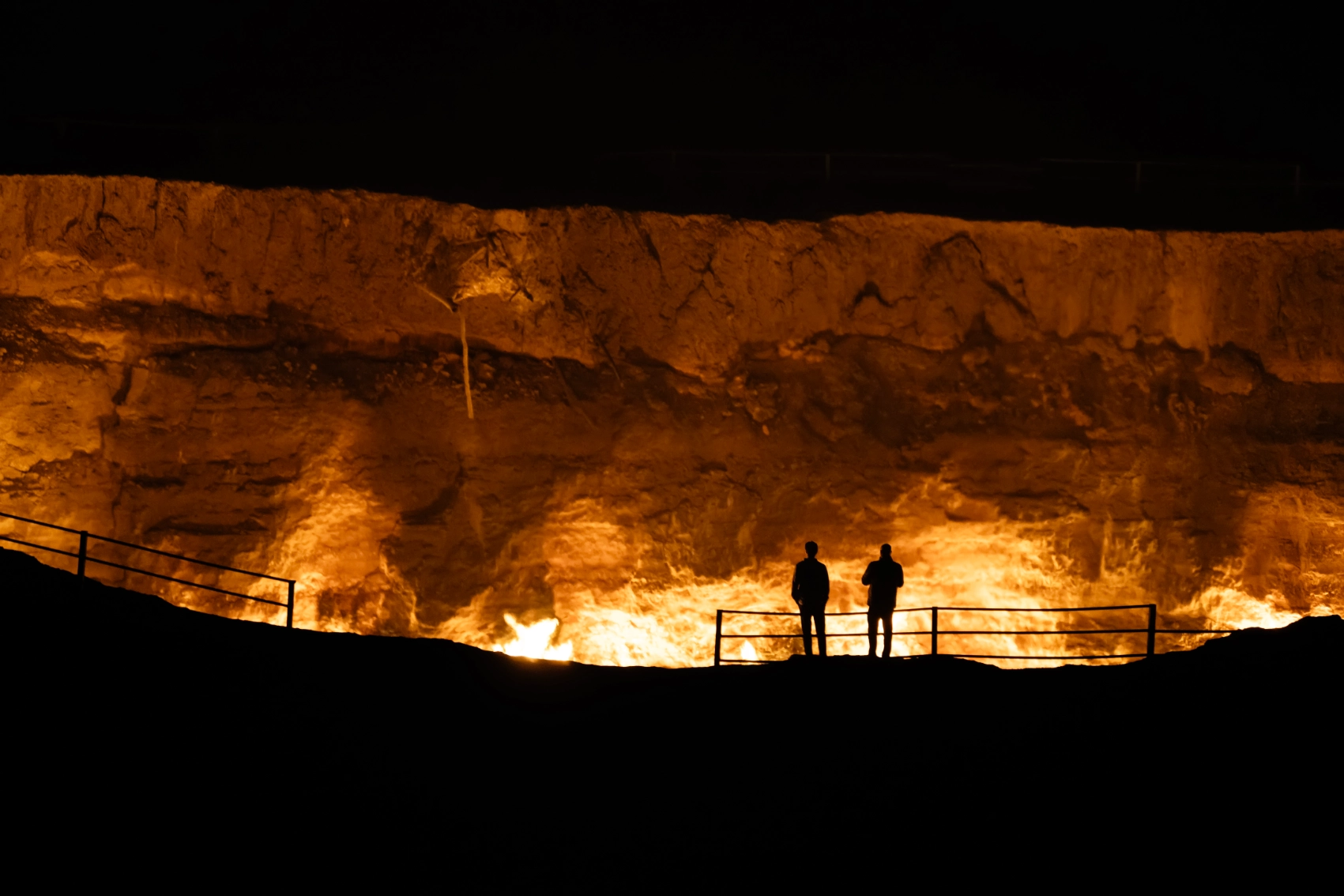
Experience it for yourself on: Best of Uzbekistan and Turkmenistan
Explore the ancient Nisa ruins
Just outside Turkmenistan's futuristic capital of Ashgabat lie the Nisa ruins, a former stronghold of the Parthian Empire. These mudbrick ruins, dating from the 3rd century BC, are among the most important archaeological sites in Central Asia. Wander the crumbling walls and partially reconstructed halls where royal banquets once took place. Though little remains above ground, what lies beneath — still being excavated — paints a vivid picture of an empire that once rivalled Rome.
Experience it for yourself on: Best of Uzbekistan and Turkmenistan























